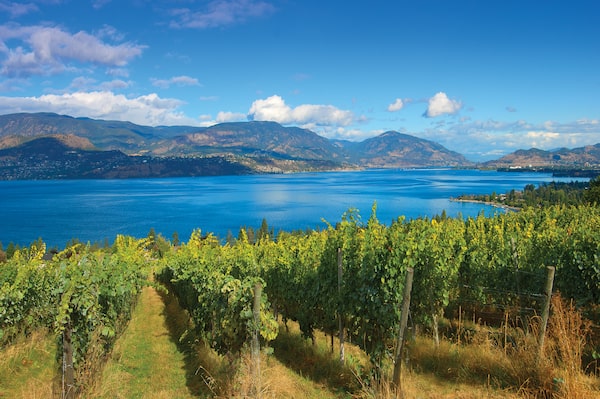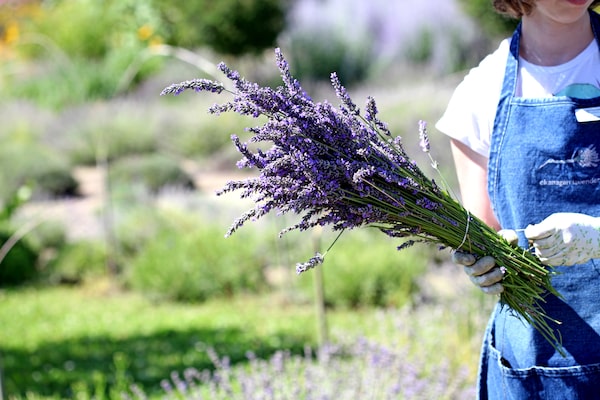
Summerhill vineyard overlooking Okanagan Lake in Kelowna, B.C.Brian Sprout/Handout
Perched on a verdant terraced hillside overlooking Okanagan Lake in Kelowna, B.C., is Summerhill Pyramid Winery, an organic, biodynamic vineyard. “The farm should be an ecosystem within itself,” says Jeremy Luypen, executive chef for the winery’s restaurant, gesturing across the vines. Summerhill practices regenerative agriculture, which relies on waste reduction, composting and companion crops to create healthy soil, and in turn, healthy food. At the same time, the winery considers the well-being of its employees as an integral part of its health. “What’s good for the farm needs to be good for people; we need to leave this land better for our grandkids,” Luypen adds.
It’s this thinking that Biosphere Tourism, an international certification granted by the Responsible Tourism Institute and supported by UNESCO, is hoping to harness as it drives sustainable change in tourism. Biosphere looks at sustainable tourism holistically, and considers socio-cultural, environmental and economic health equally through the lens of the United Nations’ 17 Sustainable Development Goals (SDGs), much like the symbiotic balance to be found in Earth’s natural biosphere. And the Thompson Okanagan, British Columbia’s sun-baked desert interior, recently became the first designated Biosphere destination in the Americas.

Vineyards encircle Okanagan Lake.Handout
“It’s a certification that allows us to showcase our region as a destination that takes sustainability seriously, but it also holds our feet to the fire to make sure that we are making the necessary improvements,” says Mike Overend, director of sustainability for the Thompson Okanagan Tourism Association (TOTA).
In order to become certified, the region had to demonstrate how they were working toward the 17 SDGs, which range from establishing clean energy to reducing poverty – efforts they’re re-evaluated on annually. TOTA then acts as a facilitator to enroll the municipality and also bring local tourism stakeholders into the fold through the Biosphere Commitment Program. With its incredible biodiversity and fertile climate, the Okanagan Valley has attracted scientists, farmers and entrepreneurs with a respect for the environment, so finding partners wasn’t difficult.
Summerhill is one of them. As part of the Biosphere Commitment Program, Summerhill works with TOTA on a few of the SDGs every year, and in turn, Biosphere provides support so that the winery can make sustainable improvements, including audits on its energy and water consumption, carbon emissions data and tools to improve these areas.
Stand up paddle boarding on Vaseux Lake in the Okanagan Valley.Grant Harder/Handout
Biosphere businesses also have access to HR professionals to cultivate an equitable workplace. “The healthier we are as individuals, the healthier we’re going to be as a society and the better relationships we’re going to have with each other and with the land,” says Ezra Cipes, CEO at Summerhill. “We really wanted to participate [in the Biosphere program] for the reason of building the will in our community for all of our neighbours to share that vision.”
This idea of investing in meaningful travel experiences that not only enrich a visitor’s time in a place but also leave the destination better off is gaining traction under the label “regenerative travel.” More than a buzzword, it’s a paradigm shift in the way we look at sustainable travel. “In the most simplistic terms, being green is about doing less damage, sustainability is about reaching net neutral, and regeneration is actually making things better for the environment and better for the community,” says Amanda Ho, a sustainable travel expert and co-founder of Regenerative Travel, an international collective of hotels devoted to positive environmental and social impact. “In order to move from sustainable to regenerative, you have a whole systems approach that creates abundance for all stakeholders; the land, the people and community, and the wildlife.”
An early morning hike up Giant's Head Mountain above the town of Summerland.Grant Harder/Handout
Thompson Okanagan hopes that its Biosphere designation will also attract eco-conscious travellers. “We’re making the internal change and we’re hoping that consumers are going to recognize that and say, I want to go there because I share that philosophy,” says Overend.
There’s growing demand for the kind of trip a Biosphere destination offers. A 2019 report by the Center for Responsible Travel found an increasing number of travellers are becoming aware of the impact they have, and a study by travel industry news company Skift shows that more than half of global travellers are willing to pay more for environmentally responsible products, up 40 per cent from 2018.

At Okanagan Lavender and Herb Farm, a biodiversity garden supports the habitat of insects, birds, and pollinators.Handout
Wineries such as Summerhill are joined by other farms such as Covert Farms Family Estate in Oliver, B.C., and the Okanagan Lavender and Herb Farm – where sustainable permaculture is practised amid a kaleidoscopic biodiversity garden – in creating these experiences for visitors. But the growing network of Biosphere-committed companies runs the gamut from outdoor outfitters and hotels, including the Marriot Grand Okanagan Resort and Myra Canyon Ranch, to museums. When travellers invest in experiences at these places, they’re working to support the environment, but also addressing poverty, inclusivity and accessibility as part of the sustainability equation.
A couple hikes across one of the trestle bridges overlooking Myra Canyon on the Kettle Valley Railway, Kelowna, B.C.KARI MEDIG/Handout
At the Biosphere-committed Okanagan Heritage Museum, the curatorial team works to create exhibits that inspire, educate and provoke discussion on these issues. A permanent main gallery devoted to the Okanagan Valley’s natural history highlights biodiversity loss and climate change, while other exhibits address social issues such as homelessness through conceptual art. In a recent reimagining of the museum’s ethos, the team also consulted with the Syilx First Nation to ensure their story was represented in the space.
“The more a museum is interwoven into the fabric of its community, the more sustainable it is as an organization, but also the more value it can provide to visitors,” says Linda Digby, executive director for Kelowna Museums. “We hope that people will take away a commitment or knowledge that will allow them to take action, whether it’s a change in their life or a kind of advocacy.”
This heightened sense of responsibility comes at a time when we must act to create a more sustainable planet for the future while there’s still time, and travel has the power to play a role. Galvanized by the success of the program, B.C.’s four other tourism regions have also started the process of Biosphere Tourism certification. When tourism becomes regenerative, so does the entire ecosystem of a place, with the potential of creating a ripple effect on a global scale. Amidst fragrant ponderosa pine forests and hills blanketed in sage, the Thompson Okanagan is a guiding light.
Helmcken Falls, near the northern tip of the Thompson Okanagan region.Handout
Keep up to date with the weekly Sightseer newsletter. Sign up today.